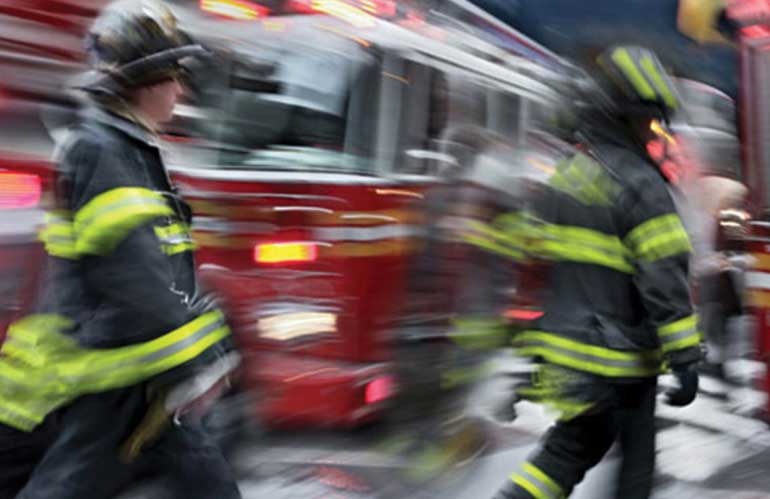- by PURVIS
- March 1, 2018,
- 0 Comments
Current State of Turnout Times
The National Fire Protection Association (NFPA) has set a six-minute guideline for fire department response time to a fire emergency. The composition of the standard is one-minute for the dispatcher to receive the alarm and then notify the first-responders; one-minute for the fire station personnel to get on the road; and four-minutes of drive time to the fire. The NFPA further recommends that each of these goals should be achieved 90 percent of the time.
The specific NFPA Guidelines are:
- NFPA 1221: 1 minute for dispatch time
- NFPA 1710: 1 minute for turnout
- NFPA 1710: 4 minutes for drive time
As is well known by any firefighter, time is a critical element in the equation that ultimately leads to saving lives and property. Traditionally, a rule of thumb has been that a fire doubles in size for roughly every minute it has to burn, so long as it has oxygen and fuel. However, modern energy-efficient construction retains more heat, the latest furnishings are made with materials that tend to burn faster, and even the new pre-fabricated roof trusses break down more easily into kindling than do older, solid wood rafters. In 1970, the National Institute of Standards and Technology found that on average, after a house fire breaks out, people have about 17 minutes to escape before being overcome by heat and smoke. Today, this estimate is closer to 3 minutes.
Here are some projections, taken from a Boston Globe study, on how response time can relate to the cost of property damage:
| Response Time: | Property Loss: |
|---|---|
| 3 minutes | $27,000 |
| 5 minutes | $34,000 |
| 7 minutes | $41,000 |
| 9 minutes | $61,000 |
However, that same Globe study reports that only 58 percent of full-time fire departments in the United States meet the NFPA’s six-minute response time guideline, from alert to arrival. While many factors make up response time, including manpower levels, level of volunteer versus career personnel, and fire station density within the district, the communication system between dispatch and fire personnel can have a substantial effect on turnout times. Getting information, in one shot, from dispatch to all of the fire station personnel who need it, in sufficient clarity and detail, is a fundamental piece of improving emergency response time.
PURVIS FSAS™ Impacts Turnout Time
The world of first response is not static. Fire departments constantly review and revise their processes in response to community needs, organizational changes, new locations, compliance and interoperability requirements and/or new technologies. Because a fire station alerting system (FSAS) is a critical part of your overall response process, your FSAS implementation will need to be both customized and adaptable to your changing needs. The best fire station alerting systems deliver:
- Full integration with your CAD System and are automatically activated by CAD.
- Improved communications by activating a variety of alerting and information-display devices that present critical information to response personnel.
- Turnout time tracking and reporting.
- Continuity by leveraging your existing systems and devices.
- Minimized firefighter stress levels. Provides ramped and auto-adjusting audio levels, low intensity pathway lighting and incident or unit-specific alerts to reduce the stress of night calls.
- A standards-based approach. Is NFPA 1221 compliant to keep you within guidelines for public safety and insurance purposes.
- High reliability and accessibility. Offer redundancy, no single point of failure and system self- monitoring, backed by a committed team that provides ongoing support and maintenance whenever and wherever you need it.
- Utilizes industry standard, off the shelf components and is configurable to meet your departments specific requirements.
